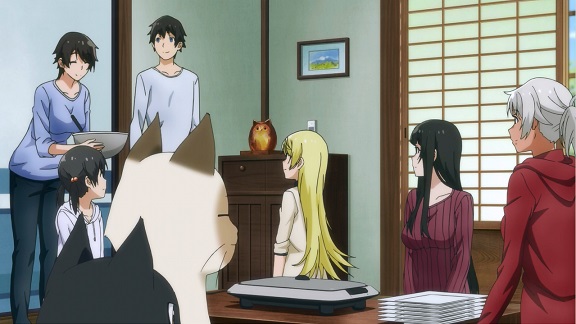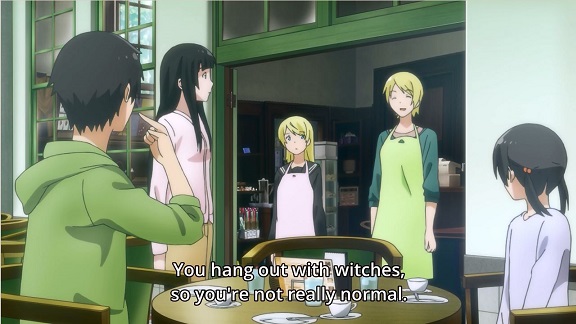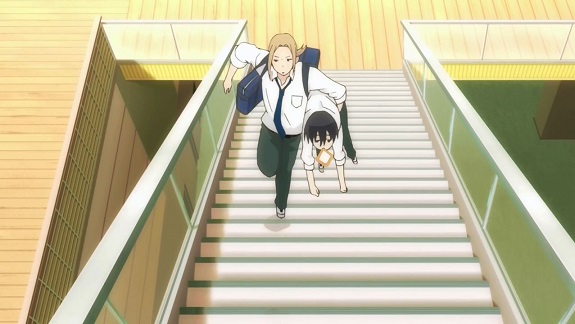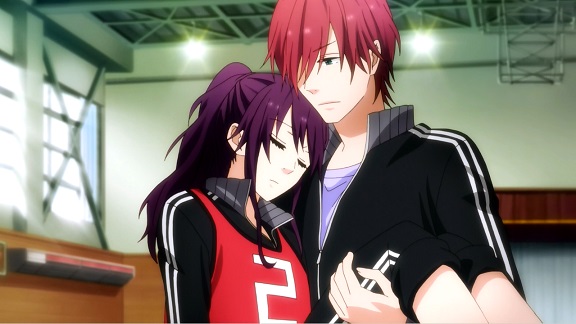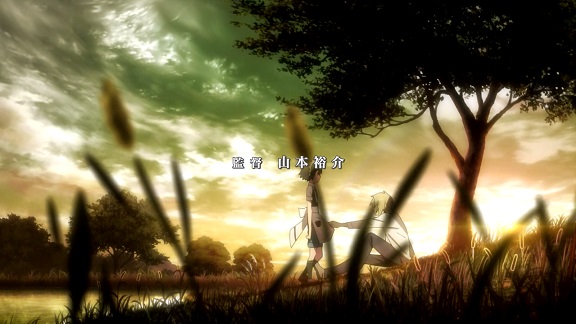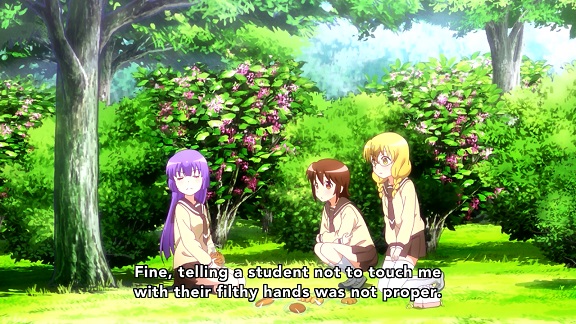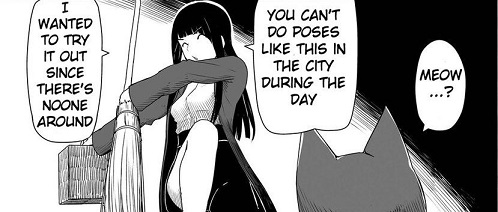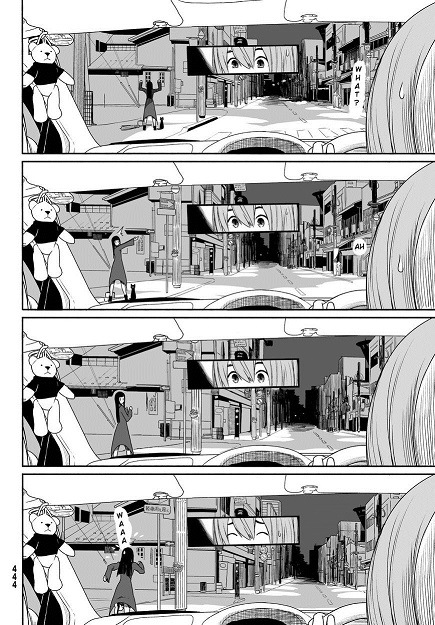It takes a good ten minutes of the first episode of Flying Witch to actually show us a flying witch, and it’s done with a minimum of fuss:
Those first ten minutes are spent following Kowata Makoto as she travels from Yokohama to a small town in Aomori deep in the countryside, where she’s going to live with distant relatives as she enters high school. She’s picked up from the bus stop by her cousin, Kuramoto Kei, who still remembers how bad she is with directions from the last time they met, six years ago. While Kei and Makoto are immediately comfortable with each other, this is not the case with Kei’s little sister, Chinatsu. Especially after Chinatsu catches Makoto talking to her cat. She mellows out a bit though once she guides Makoto to the local shopping center and she’s treated to a donut. And then Makoto spots a line of brooms in the DIY centre and this scene happens. A magical moment, but a thoroughly mundane one. Especially when you compare it to similar scenes in Kiki’s Delivery Service or Little Witch Academia, Makoto’s first flight is a thoroughly subdued affair.
This is the strength of Flying Witch, treating magic and witchcraft not as something separate from everyday life, but instead having it rooted firmly in mundane concerns. Unlike most anime with magic in modern settings, it isn’t treated as something that has to be kept a secret. Witness the casual way Makoto landed herself in front of Kei when he was talking to somebody she didn’t know. Luckily it turned out to be Kei’s childhood friend Ishiwatari Nao, who took it all in stride. While Chinatsu is full of wonder of being able to fly and doesn’t stop laughing about it, Nao just has to pinch herself once. It’s not the last time Makoto will surprise her like this. While Kei is largely used to it and Chinatsu takes to witchcraft like a duck to water, Nao’s role is that of the straight man, having to put up with Makoto’s antics.
Nao is wonderful, and the best part is that there’s no hint of romance between her and Kei. Nor between Kei and Makoto. If there’s any chemistry, it’s between Kei and Akane, Makoto’s elder sister, but even that is more being comfortable around each other than anything else. There’s no romantic tension or subplot here whatsoever. Nor is there any fanservice. Or rather, no overt fanservice. No creepy camera angles, comedy gropings or excuses to have a swimsuit episode.
What further sets Flying Witch apart is how much it revolves around family rather than school life. Much of the series takes place either in or around the Kuramoto family home, or has Makoto going on outings with Kei, Chinatsu and Mao. Both Mao and Kei have their own lives as well and aren’t always present, though Chinatsu is. But then Chinatsu had quickly decided she wanted to be a witch herself. What makes this a rarity in anime is that Kei and Chinatsu’s parents are also frequently around. Not in any major role perhaps, but like how you’d expect to see your own parents at the weekend or in the evening.
Flying Witch‘s setting is super nostalgic for me by the way. I come from the same sort of backwater agricultural region here in the Netherlands, with all of my father’s family being farmers of some sort. (While he himself was a civil servant, farming’s still in his blood so he’s still running a Corbyn style allotment at 71.) The Kuramoto home has that same mingling of working and living spaces that I remember from visiting the family on Sundays, the same sort of slightly oldfashioned shabby chicness. Even the way Kei’s father has a much more heavier Amori accent than either his wife or children feels familiar. I bet any money that it’s the mother that does the book keeping. The village as well seems familiar, not as outrageously pretty as anime sometimes wants to showcase the Japanese countryside. Reminds me of those small villages in northern France you might ride through on the way to the actual tourist areas.
That groundedness makes the magic in Flying Witch look natural, but that doesn’t mean it lacks sense of wonder. As the series progresses, the magic the non-witch characters are exposed to can sometimes be amazing, sometimes frightening, as is the case with Chinatsu here. No matter how mundane Makoto’s use of magic is, there is a sense of larger powers slightly beyond the sight of ordinary people. There is never a sense of sustained dread however; the magic here is mostly benign. The way in which the series slowly reveals that larger world of magic while Makoto and her family go about their daily business makes this an excellent example of iyashikei. I enjoyed Flying Witch when it first aired and rewatching it only made me like it more. An underrated gem.

